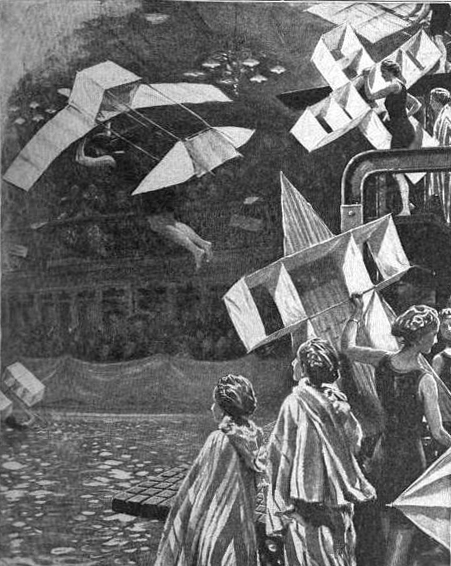- Originally published on the Bartitsu.org site on Friday, 7th December 2012
The famous Bath Club features significantly in the history of Bartitsu. Founded at #34 Dover Street in 1894, the Club was named for its large indoor swimming pool, which was a great novelty at the time. The pool featured several diving boards and a “Newman’s water-chute” for sliding, as well as a flying trapeze and a set of “travelling rings” suspended from the ceiling, challenging the most athletic Club members to traverse the length of the pool without getting wet.
The Club building was also equipped with a fencing salon and a gymnasium as well as steam-rooms, showers, an opulent dining room and “overnight rooms”. A comparatively progressive institution, membership was available to both men and women; the latter had their own dedicated entrance, a gesture which might be read either as condescension or as extravagant courtesy, or possibly both at once.
In March of 1899 the Bath Club was the venue for one of E.W. Barton-Wright’s jiujitsu demonstrations. He later noted that he had been awarded a membership in the Club due to his feat of defeating seven larger men within three minutes at a previous display. The Bath Club demonstration was, notably, the first time Barton-Wright had collaborated with the famed historical fencing revivalist, Captain Alfred Hutton, who later joined the teaching staff at Barton-Wright’s own Bartitsu Club.

This event may well also have been Barton-Wright’s introduction to Hutton’s rapier-and-dagger fencing partner, William Grenfell, the 1st Baron Desborough. A notable athlete and a prolific public servant, Grenfell was the president of the Bath Club and he was to go on to become the president of the Bartitsu Club. Sir Cosmo Duff Gordon was another famous Bath Club member who subsequently also joined the Bartitsu Club.
The Bath Club was the venue for several other unusual sporting displays, including a peculiar spectacle organised by Alfred Hutton two months after the Bartitsu display. “Water tilting” was a one-off revival of a type of aquatic jousting, which had apparently been amongst Henry VIII’s favourite sports. According to a newspaper report:
A large and gaily dressed assemblage watched the pair of old-fashioned-looking warriors tilt at one another in the waters of the bath, one of them holding a long spear (with padded point) and a stout leather buckler, the other paddling behind him in the cranky craft, which only just held both when both were evenly balanced. The two shallow boats put out from their respective ends at the word ‘Go,’ and one pair were soon struggling in the water, amidst the merriment of the audience.
The new sport of water polo was also a great attraction:

In 1910, the Club hosted an exhibition of a “novel and exciting aero-swimming game” in which competitors equipped with elaborate kite-like gliders leaped off one of the diving platforms, endeavouring to soar a short distance before their flight came to an inevitably wet end:


